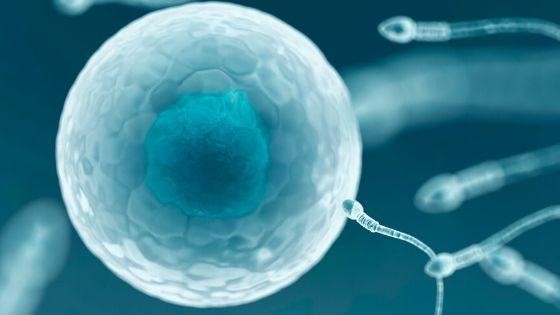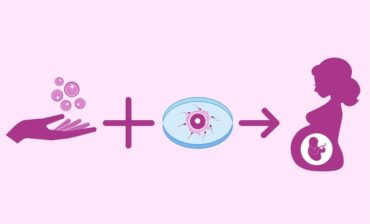In Vitro Fertilization (IVF) is a procedure in which a woman’s eggs and a man’s sperm are joined in a laboratory to produce an embryo (s). Depending on the woman’s diagnosis and age, an embryo or embryos are transferred to her uterus through her cervix to improve her chances of becoming pregnant. The first IVF-assisted pregnancy occurred in England in 1978. IVF was once solely indicated for women who had obstructed fallopian tubes when the procedure was first launched. IVF success rates have risen substantially in recent years especially in metro cities like Mumbai, and it is now used for infertility in heterosexual and same-sex couples, as well as single women who want to start a family.
These four steps can be used to illustrate the IVF procedure. The details are explained by Dr Mohit Saraogi, who is one of the best IVF doctors in Mumbai.
Steps Involved In IVF:
Induction of ovulation is the first step.
Your doctor will keep an eye on your ovaries before and during the IVF procedure to ensure that you release eggs at the right moment. The ovaries are usually stimulated to generate one or more eggs using medicine or hormones.
Obtaining the eggs is the second step.
Your doctor will put a very tiny needle into the higher vaginal wall and collect fluid containing eggs from the follicles of the ovaries while you are sedated. The egg is placed in a dish and transferred to an incubator as soon as the follicle(s) are removed.
Fertilization is the third step.
A sperm sample is obtained, either from your spouse or from a donor, and is examined before being joined to the recovered egg(s). In order to maximize success, your doctor may choose to inject the sperm straight into the egg. The fertilization process is then monitored by the doctor and embryologist to ensure that a healthy embryo develops.
Embryo transfer is the fourth step.
You return on “transfer day” once your doctor and embryologist have determined that the embryo(s) are ready for transfer. This is an exciting but nerve-wracking day because, while you’ve reached the end of the IVF process, there are still a lot of unknowns. The doctor inserts a speculum into your vaginal canal and transfers the embryo(s) into the uterine cavity using a thin plastic tube passed through the cervix.
Benefits Of IVF in Mumbai:
Increased Possibilities of Having a Healthy Baby
Preimplantation genetic testing (PGT) on the embryo before it is implanted into the woman’s uterus is an option for hopeful parents who utilize IVF. PGT-A (preimplantation genetic testing for aneuploidy) and PGT-M (preimplantation genetic testing for multiples) are the two types (preimplantation genetic testing for monogenic defects). PGT-A examines the embryo for an abnormal number of chromosomes. When there is a danger of a certain inherited genetic disorder, such as cystic fibrosis or Tay-Sachs Disease, PGT-M is conducted.
A Reduced Chance of Miscarriage
A genetic mutation that the body detects is one of the most common causes of miscarriage. PGT can be done in conjunction with IVF to identify whether an embryo is genetically viable ahead of time, increasing the chances of a healthy pregnancy.
Donation of eggs or sperm
It’s possible that optimistic parents won’t be able to generate viable eggs or sperm. A donated egg, donor sperm, or both can be used in IVF. This is crucial when it comes to assisting same-sex couples in conceiving through IVF or employing a surrogate in their quest for kids.
Increased Chances of Getting Pregnant
Many factors can influence your ability to conceive without the use of assisted reproductive technologies. The quality and quantity of a woman’s eggs, for example, declines as she gets older, as do her chances of becoming pregnant naturally. IVF can greatly boost a woman’s chances of becoming pregnant beyond her 20s because it is a carefully controlled process that involves selecting and using only the most viable eggs.
You are in charge of the timeline.
Because of the realities of job development and unique living conditions, you may only have a limited amount of time to focus on developing your family. Eggs or embryos can be cryopreserved in these situations until the time is appropriate. You can use this option once you’ve decided on the best timing to become pregnant.
- Understanding Your Baby’s Cry: A Parent’s Mini Guide - June 23, 2025
- Bottle vs. Breastfeeding: What Works for You and Your Baby - June 18, 2025
- 10 Yoga Poses For Kids at Home: Benefits Of Yoga For Kids - June 12, 2025
- Parenting Guide to Child Development: Key Milestones from Birth to 10 Years - June 4, 2025
- Summer Vacation Plans Ideas with Kids - May 27, 2025
- Nutritious Dried Fruit Treats for Toddlers (16–24 Months) - May 25, 2025
- Importance of Screen Time Management for Kids - May 24, 2025
- The 6 Most Common Pregnancy Concerns First-Time Moms Have - May 23, 2025
- Top 10+ Summer Activities for Kids - May 15, 2025
- Busy Family Tips for Raising Healthy Smiles - May 2, 2025
















